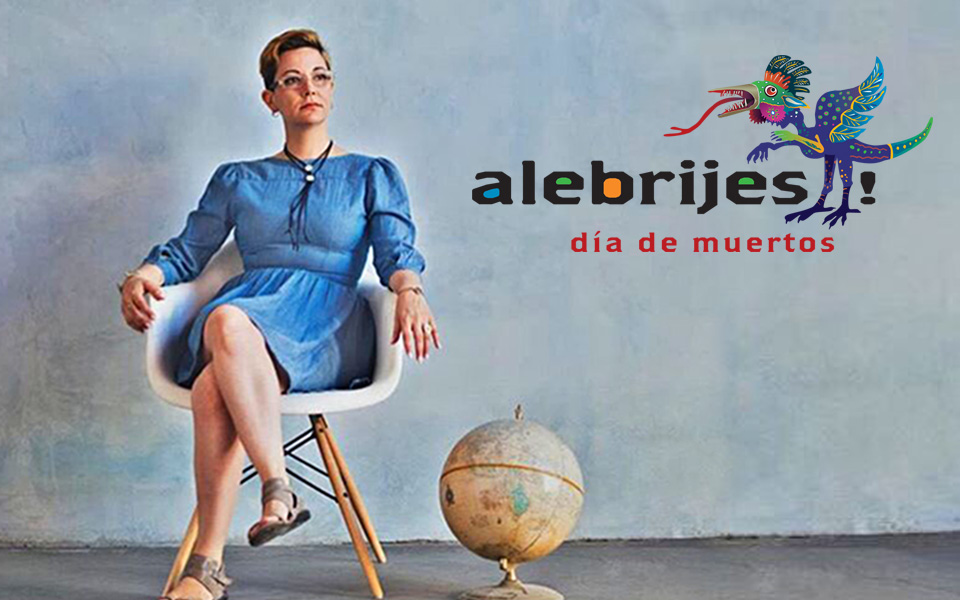A conversation with the writer and director of
Alebrijes! A Día de Muertos celebration
You have worked with Milagro before, even as recent as last season on Bi– as writer and director. What other projects have you worked on with us, and how did your relationship with Milagro begin?
I was brought on to devise, write, and direct the 2016 Día de los Muertos production called El Muerto Vagabundo. José became familiar with my work at the Carnaval of New Latinx Work in 2015 and from there decided to bring me on for this socio-political fantasy. I was also subsequently the director for Teatro Milagro’s production of Emilio Rodriguez’s El Payaso and soon after, commissioned to write and direct Bi—(be). I love the Portland community and working at Milagro because of they keep true to their mission, unabashedly, in creating work that provokes and take risks. That is a dream for any creator and I just hope that the work I create there touches the audience in a deep and meaningful way.
Your show next season will be based on the Latino artwork known as Alebrijes. Tell us how that became the subject you wanted to use for the 2018 Día de Muertos production.
It’s interesting I think it’s one of those things that percolated naturally for both Milagro and for myself as a writer. I’ve always wanted to tell the story of Pedro Linares, specifically, to be able to create a historical fiction about the creation of the creatures. There is also much legend around the infamous Maria Sabina and the alebrijes from Oaxaca so, being that I grew up in central Mexico, I was always ‘sandwiched’ between these two legends. Pedro was a ‘cartonero’ from D.F. and the story that most people tell is about his ‘near death’ experience and how he saw the creatures within the feverish dream. Maria Sabina is best known for her shaman distribution of psychedelic mushrooms in the jungles of Oaxaca. So I thought, ‘wow, wouldn’t a phantasmagoric tale of Mexican legends and creatures be super fun for Día de Los Muertos?!’ Also, the aspect of animals and animal spirits is something we rarely attribute to Day of the Dead, but I can tell you from experience that I know many altares in Mexico that include pictures of their dead horses, dogs, cats, and chickens! So this was my way to invite yet another aspect of Mexican culture via this highly celebrated ritual.
What are some of the specific production elements you will be incorporating into this production?
I think a large one for me is Music. I’m not sure if I will incorporate live music or canned, but even if canned, it will be re-interpretations of some of the classics. To me music is a vessel through time and it’s important for me to bring out the era that this piece takes place in: the 1930s. Though I will be more liberal with other musical elements, the classic tunes that some of us might recognize from childhood will definitely show up in some haunting way or another. Another aspect is the use of object manipulation, puppetry, and physical movement to embody and tell the story of the creatures. I envision two versions of Pedro’s pets: the cat, the rooster, and the duck and for that I am working with a puppeteer to look at designing them as tabletop puppets manipulated by one or more actors. The idea of creating worlds requires a stretch of the theatrical imagination, so many elements will show up that will require that leap of faith and I envision many of the ‘props’ and ‘alebrijes’ used in the production to be made with and by the local community through a series of Prop Making parties. 🙂 Everyone get your paper mâché skills ready!
What excites you most about this project?
I think tackling the period (1930s) and the use of animals is incredibly exiting. But most exciting is the story itself. I once heard someone call the theatre the «empathy gym» and so the idea of working out some of the empathetic strings of the relationship to our environment and animals is going to be an interesting thing to tackle all the while keeping true to the importance of the ritual. I think that talking, seeing, and keeping the ritual of honoring the dead alive allows us to value and empower the living. In that way, I want to invite the idea that we are all in this together, animals, jungles, people, the dead, and the living. That’s exciting and terrifying and I can only hope to do it some justice.
Alebrijes! A Día de Muertos celebration
October 18 – November 11, 2018
FlexPasses are now on sale. For more information please call 503.236.7253.

